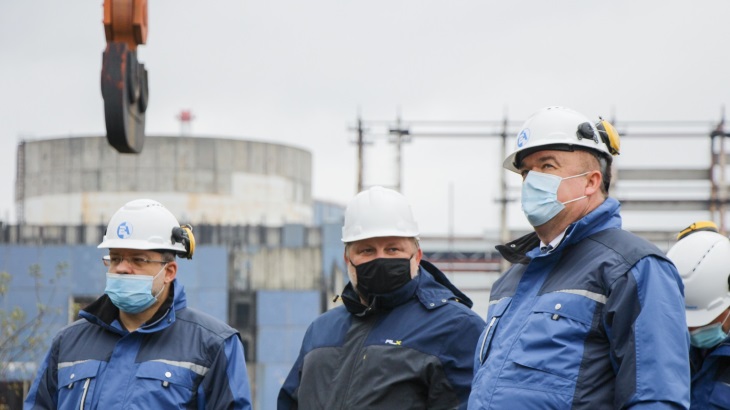According to preliminary conclusions, the condition of reinforced concrete structures of unfinished units "fully meet" the design requirements, Energoatom said on 24 November. "This is an exhaustive response to those who say that it is impossible to build blocks due to the supposedly poor condition of the concrete. This is very good news for all of us - it's time to start work," Kotin said.
Commenting on the legislative aspects of the projects, Kotin said: "We expect that by the end of November the Ministry of Ecology will approve the Environmental Impact Assessment Report of the construction of power units 3 and 4 of the Khmelnitsky nuclear power plant. I hope that after this the draft law on the placement, design and construction of the units will be processed quickly by the Cabinet and sent to the Parliament, which will adopt it before the end of the year."
Herman Haluschenko, Energoatom vice-president, said the project "will create jobs for tens of thousands of Ukrainians, because it is necessary to localise the production of equipment for the completion of units at domestic enterprises, using the scientific and technical potential that we have preserved". He added: "We have all the prerequisites for this project to take the first place in the country in terms of scale and strategic importance."
Energoatom will "make every effort", he said, to ensure that all tenders for the purchase of equipment and services for the project, as well as competitions for the selection of contractors, are held "as transparently as possible".
Construction work originally started on unit 3 in September 1985 and on unit 4 in June 1986. Both units are designed for an installed capacity of 1000 MW at the VVER-1000/B-320 plant. Unit 3 and 4 were 75% and 28% complete in 1990, when a moratorium on the construction of new nuclear power plants was imposed and the project was suspended.
Ukraine's project to build Khmelnitsky units 3 and 4, which was put on hold, is part of Ukraine's so-called Energy Bridge, according to which it would have started supplying electricity to the EU network as early as 2019, and would complete the project by 2025.






_63865.jpg)
_18570.jpg)
_16159.jpg)





